How to Use Garlic Like a Pro
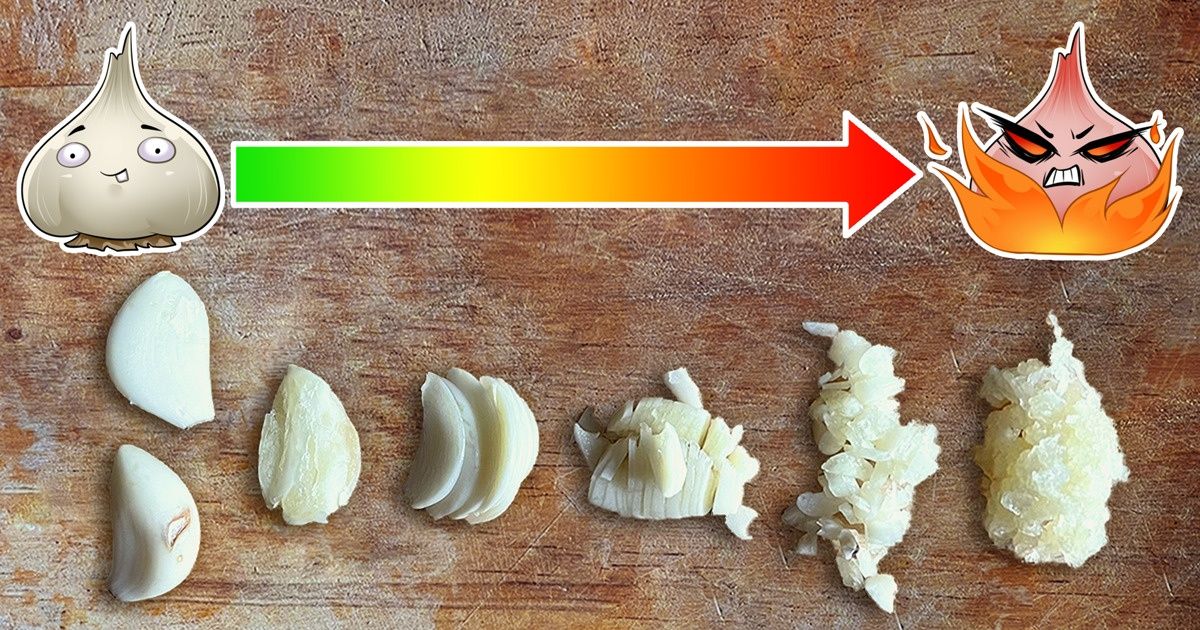
Garlic is one of the most common ingredients in the world. And while it seems obvious how to use it, there are many things to take into consideration if you really want to master recipes that call for its characteristic sweet but intense flavor. Even if you’re making something simple, like a vinaigrette, your dressing can benefit if you know your way around a head of garlic.
5-Minute Crafts is showing you how to up your garlic game to become a pro.
A. Picking the right garlic
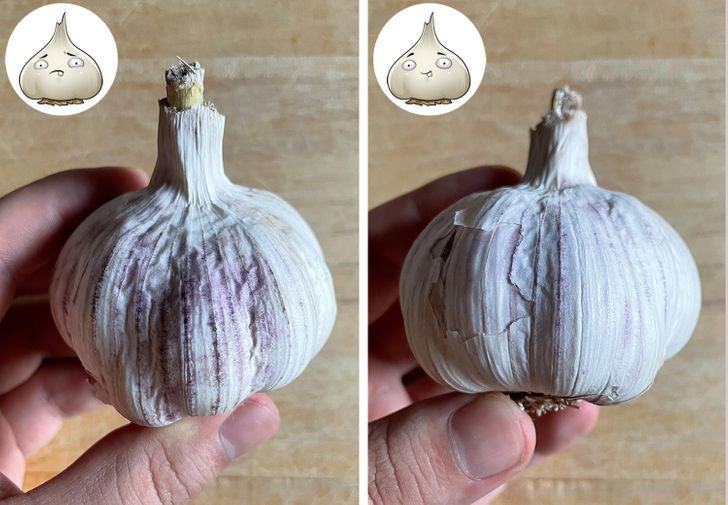
Every good recipe deserves the best ingredients you can get, and garlic is no exception.
Typically, garlic will taste better in the summer, right after it’s been harvested, when it’s full of flavor but still sweet. You can find good quality garlic during these months at the farmer’s market. During the rest of the year, most garlic will be frozen from that summer harvest, which will alter its flavor to make it more pungent.
B. Peeling the garlic
There are different hacks that you can use to peel your garlic faster. Depending on how many cloves you need, you might want to use different methods. If you buy pre-peeled garlic, you can skip this step.
1. For 1 or 2 cloves
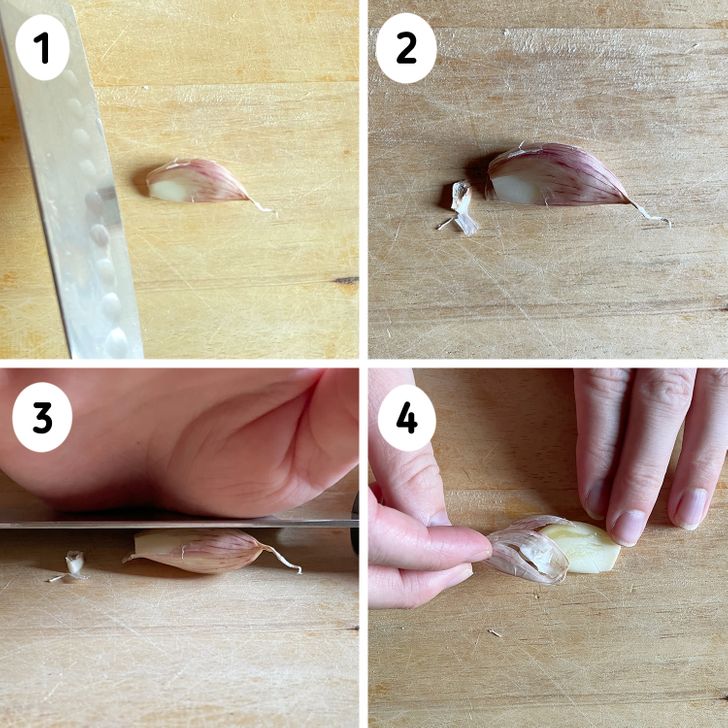
- Remove the root of the clove(s) by slicing it with a knife.
- Place the clove(s) on your cutting board.
- Use the side of the blade of a chef’s knife to hit the cloves. The peel will easily separate from the garlic now. Alternatively, you can use the flat side of the blade too. With the heel of your hand, press down until the clove is crushed. Do so at a 90-degree angle to keep the blade from slipping.
- Remove the peel.
2. For more cloves
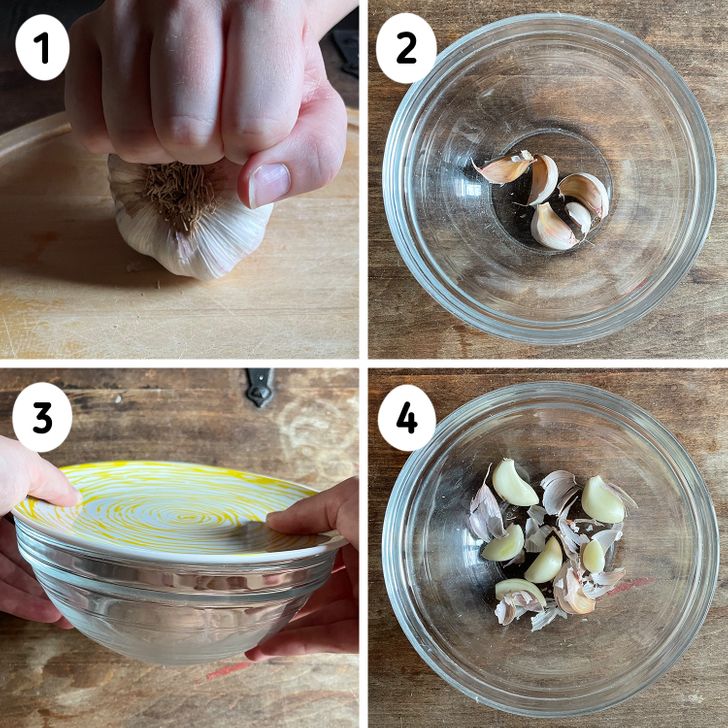
- Use the palm of your hand to push down on the garlic bulb. By doing this, you’ll separate the cloves from the root. You can use both of your hands if you need more strength.
- Place the garlic cloves in a large bowl or any other sealable container that’s much larger than the amount of garlic that goes inside.
- Put a plate (or a slightly smaller bowl) upside down on top of the bowl. Hold the 2 together and shake vigorously for 20 to 30 seconds.
- Discard all the garlic peel and remove any that might still be attached. They should come off very easily.
C. Using garlic
As straightforward as it might seem, garlic’s pungency can be used and controlled in different ways. Here are some of the most common ways chefs use garlic.
1. Understand what makes garlic taste more intense.
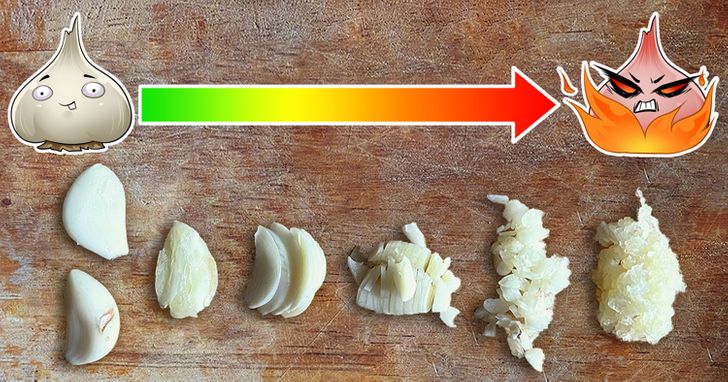
The intensity of garlic flavor in your dishes depends on 2 different things.
- Treatment: Depending on how you cut your garlic, you might obtain more intensity from a single clove. A single whole clove will give a less intense flavor than a crushed one, a crushed clove will be milder than a sliced clove, and a sliced one isn’t as pungent as a chopped or pureed one. This is because the more cells you break, the more potent your garlic will be.
- Quantity: The more garlic you use, the more garlic flavor you’ll get.
2. Mince with the right tools.
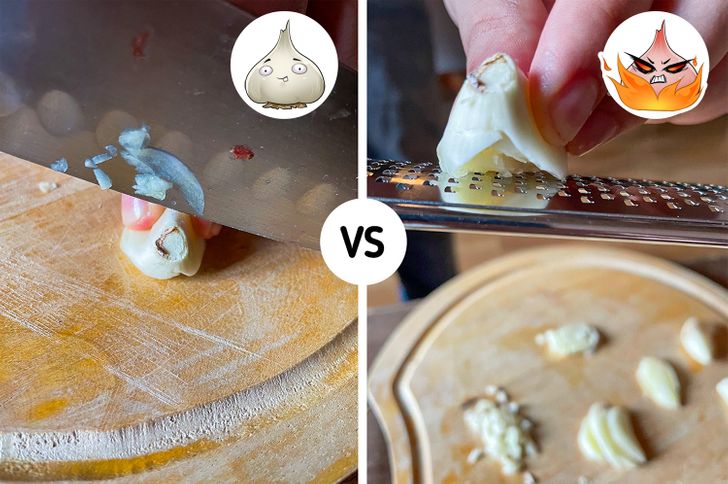
Since intensity and pungency depend on how many cells you break, there’a big difference between finely mincing garlic with a knife and grating garlic with a microplane, for example. In order of intensity, you have:
- Knife-minced: It’s relatively mild, with little bits of chewable garlic that are tender and sweet.
- Garlic press: It has a stronger overall flavor than knife-minced, with a medium burn in the throat. It’s a little sweet but also a little harsh.
- Microplane: The burn sets in faster than the others, with a slightly acrid taste. It comes with an unpleasant bitter aftertaste that hangs in the mouth, but it’s not severe.
Keep in mind that the longer you cook garlic, the less intense its flavor will be. So after a certain point, like if you’re making a long-braised stew, for example, the way you minced it doesn’t really matter anymore.
3. Create layers of flavor and mix with other ingredients.
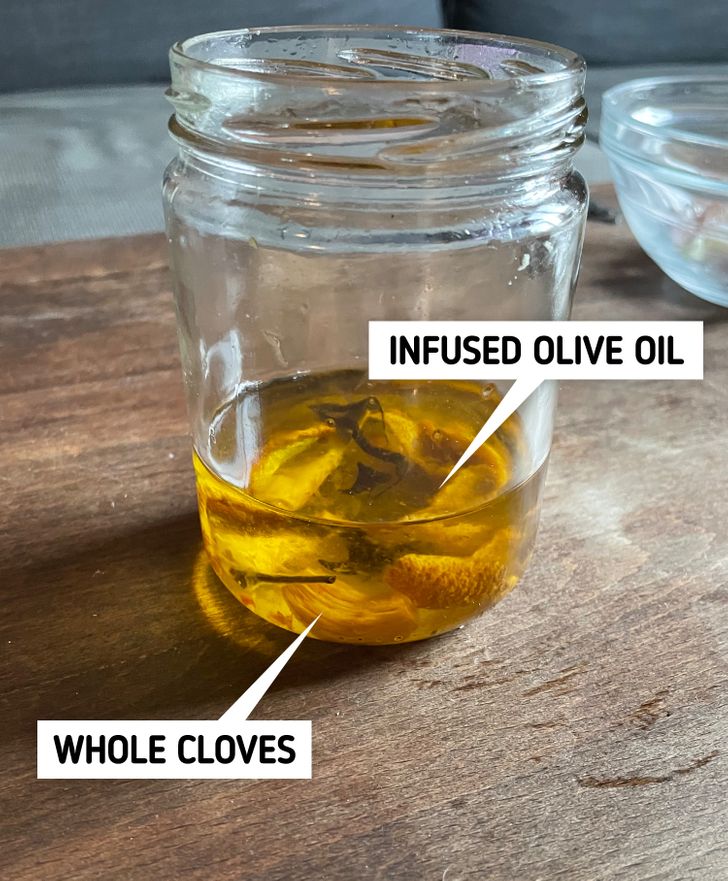
The key to really great garlic flavor is to use a combination of techniques. For any dish in which garlic is meant to be celebrated, you can try layering it by doing the following.
- You can use whole slices. In most cases, you might want some amount of actual garlic to get into the final product. These slices, whole cloves, or sometimes even chopped bits are often added relatively close to the end of cooking, just long enough to get rid of their harsh bite.
- Try infusing your cooking oil with smashed whole cloves. Just heat them up over a very moderate flame until the garlic sizzles, then toss it. Your oil will now have a sweet, garlicky flavor.
- Marinate your main ingredients with raw minced garlic mixed with oil and salt. The salt will draw out flavors from the garlic, and the oil will spread them evenly.
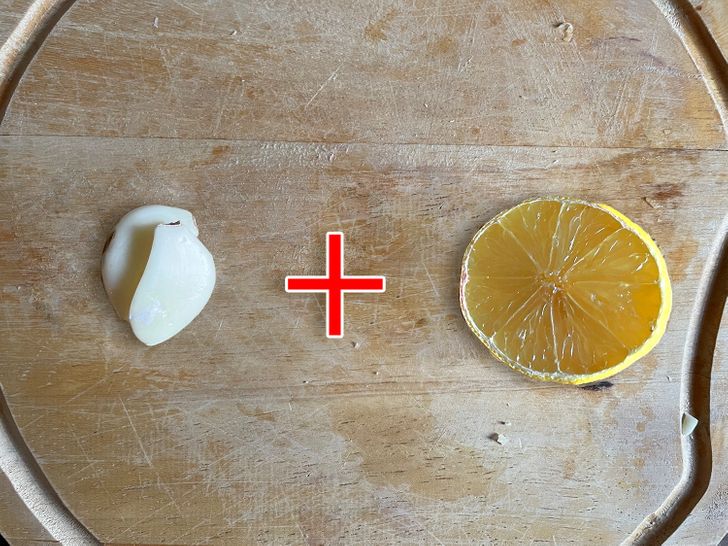
For other recipes that call for garlic, but more as a complementary flavor, you can minimize its pungency by doing the following.
- Mix with acidic ingredients, such as lemon or lime. Pureeing a whole head of garlic with these will give you a mixture containing a robust yet mellow garlic flavor and aroma, and none of the acridness.
- Remove the garlic germ. If your garlic isn’t freshly harvested, as it’s likely to be during the summer and fall only, you can always remove the germ.
- Apply heat when you stir-fry a whole clove of garlic (again, intensity depends on how you cut it as we saw in points 1 and 2 of this section) or when you roast it in the oven.